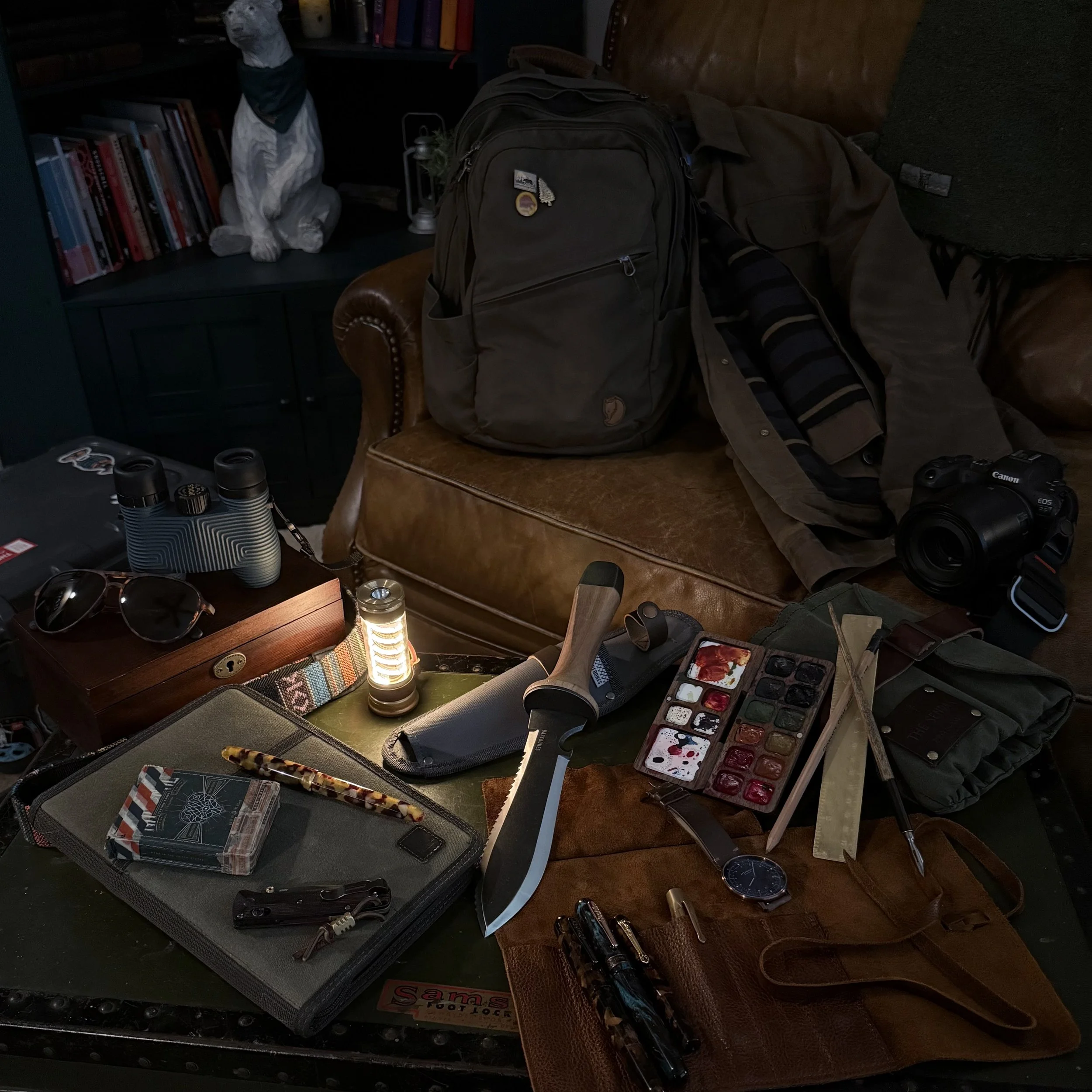Creating a Style — and Curating a Collection That Looks Like You
How to make your possessions sing the same tune you do (without sounding like a catalog)
A few Favorites from my personal collection
One of my favorite compliments I’ve ever received recently came from a friend of mine who happens to share my name... He said, “If I ever came across something of yours without knowing for a fact that it belonged to you, I would just know because of what it was and what it looked like.” I thought that was awesome — not because I had ever pointed out my “style” to him, but because he noticed it for himself. That’s what happens when your belongings are not just random objects but part of a curated collection that looks like you!
Over the past several years, I’ve worked to not just find and own items of quality that perform well, but to build a collection of things that belong together — aesthetically and practically. My backpack, my jackets, my pens and notebooks, my watch, my boots, even my coffee mugs and Bible — they all carry common threads: brass with patina, waxed canvas, rustic brown leather, dark natural greens and amber, wood, durability, reliability, and old-world character.
So why does this matter? And how can someone else begin creating a style and curating a collection of their own?
Why bother curating at all?
Our possessions do more than serve a function. Psychologists suggest that the things we keep close actually play a role in our sense of identity and how we present ourselves to the world. When our belongings are chosen with intention, they reinforce a consistent personal narrative. On a practical level, this means less clutter, fewer decisions, and a collection that feels unified and purposeful. On a deeper level, it means the story our belongings tell is actually our story.
Step 1: Start with words, not shopping
Before buying anything, choose 6–10 adjectives that feel like you. Old-world, rugged, adventurous, reliable, warm, strong, quiet — whatever speaks to you. These words become your creative compass.
Step 2: Choose your palette and materials
Pick a handful of colors and materials that define your style. Mine: dark greens, browns, and amber; brass with patina; rustic brown leather; waxed canvas; and wood. This is my material “language.” When I’m considering a new piece, I simply ask: Does it speak this language?
Step 3: Identify your anchors
List your everyday carry or touchstone items — the things you use or wear daily. Backpack, watch, jacket, boots, coffee mug, pen, notebook, sunglasses. These anchors shape the strongest impression of your style. Get those right, and the rest will naturally fall in line.
Step 4: Buy fewer, buy well
Instead of collecting by impulse, invest in fewer, better pieces. Look for craftsmanship, repairability, and materials that age gracefully. A waxed canvas bag that wears in over years, or a brass pen that takes on a patina, becomes part of your story in a way a disposable item never could.
Step 5: Curate like a curator, edit like an editor
Ask yourself not only, “Is this great?” but also, “Is this great for my collection?” Revisit your belongings every 6–12 months. Keep, repair, replace, or pass along. Your collection should evolve, but it should stay true to your chosen story.
Small rituals that help
Inventory your anchors and note what needs care or replacement.
Set decision rules: “New bags must be waxed canvas or leather,” or “No more than two colors outside my palette.”
Note the story of each acquisition (where, when, and why you bought it). That story deepens the collection.
Care for your materials: condition leather, re-wax canvas, gently clean brass but let patina live.
The payoff
Curating a collection that looks like you simplifies decisions, saves money in the long run, and creates a quiet steadiness in daily life. Your space and your carry become a kind of museum — not sterile or showy, but a living reflection of who you are. And when someone else can recognize you in your belongings without you saying a word… that’s the mark of a collection done well.

